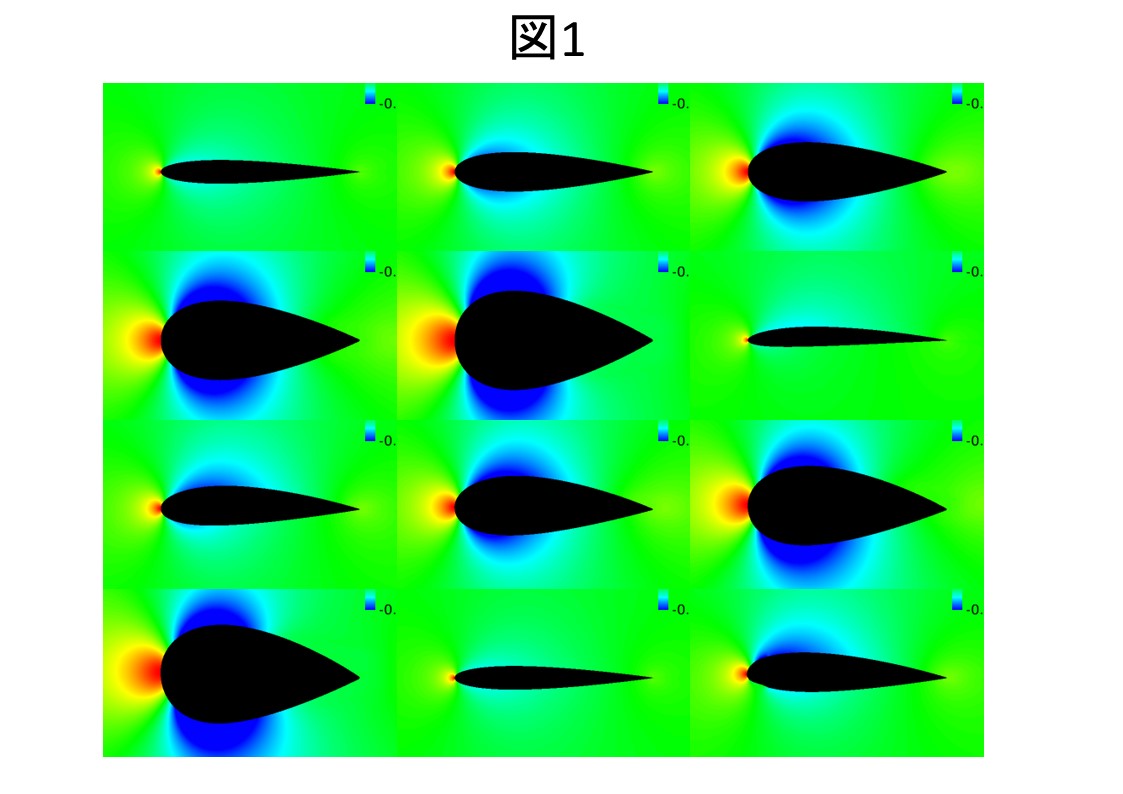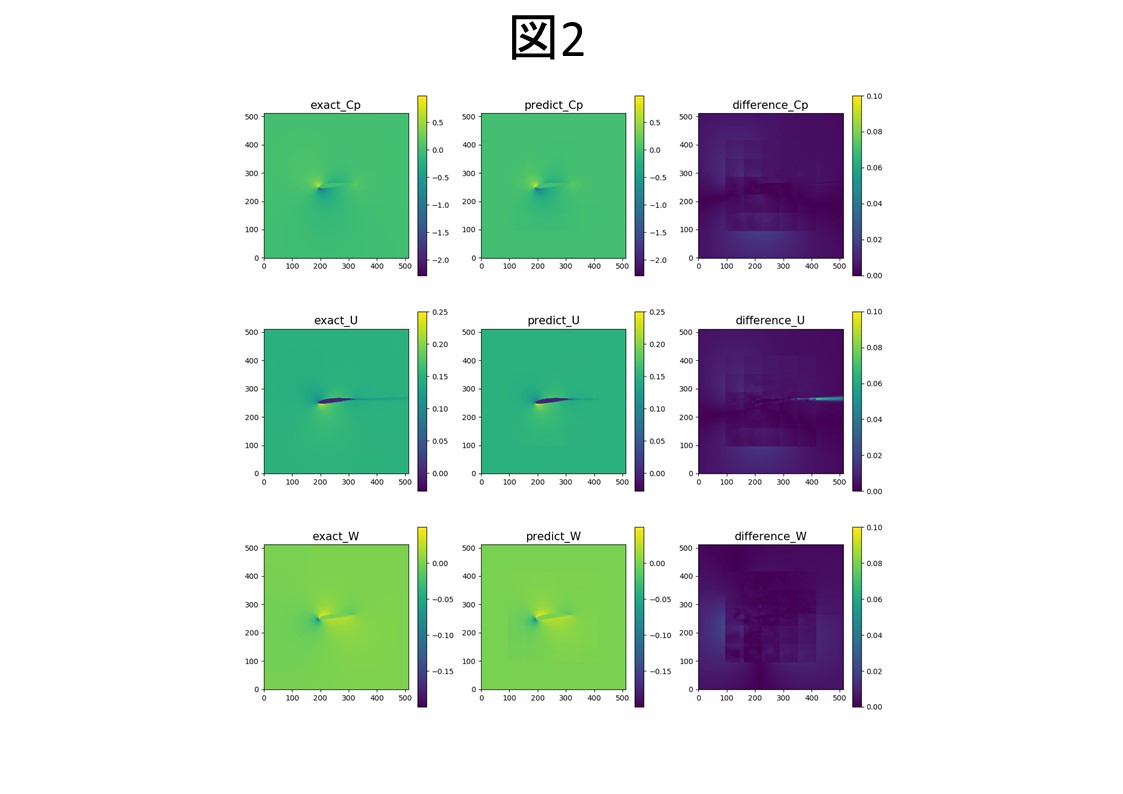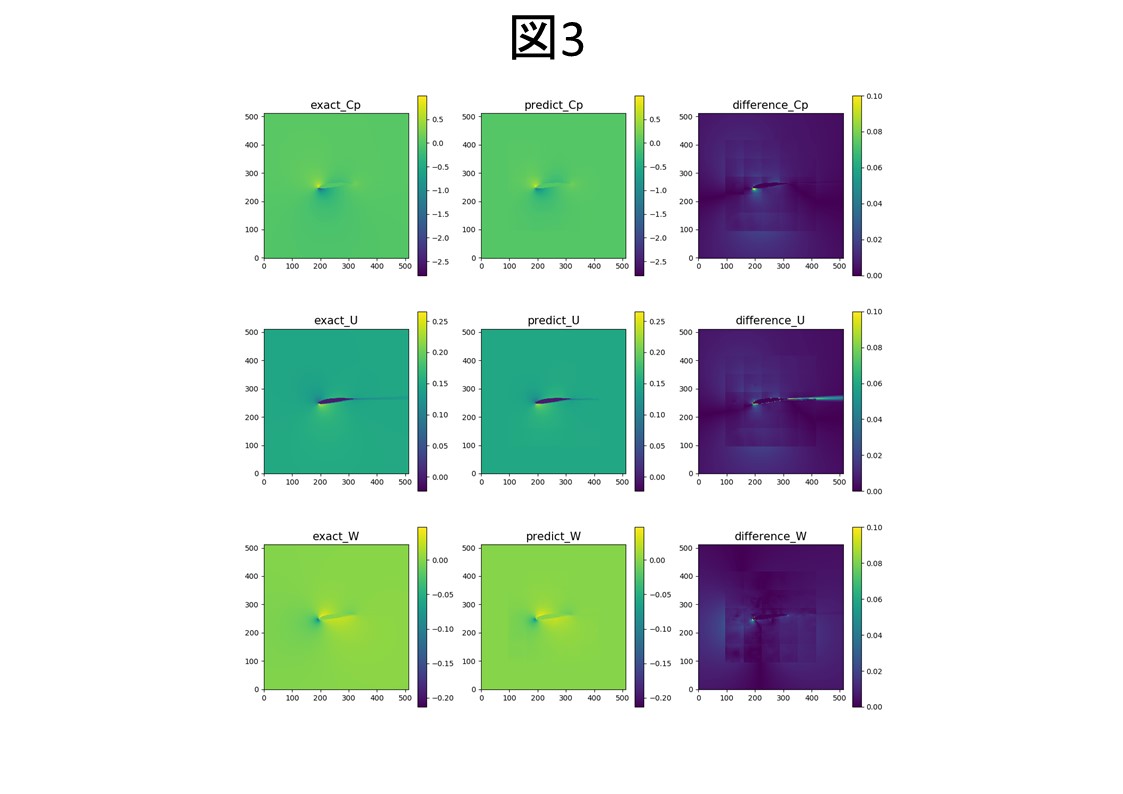An attempt to develop a method for modeling holistic phenomena without a prerequisite knowledge
JAXA Supercomputer System Annual Report April 2018-March 2019
Report Number: R18EDA201N09
Subject Category: Aeronautical Technology
- Responsible Representative: Takashi Aoyama, Aeronautical Technology Directorate, Numerical Simulation Research Unit
- Contact Information: Masashi Kanamori, Aeronautical Technology Directorate, Numerical Simulation Research Unit(kanamori.masashi@jaxa.jp)
- Members: Masashi Kanamori, Shogo Goto
Abstract
It is important to gain a fast and accurate feedback from computational results in a design process. A traditional way of Computational Fluid Dynamics (CFD) gives physically acceptable results at the costs of tremendous amount of computational resources and time. Our research group is therefore working on a machine-learning-based approach aimed at an innovative design tool.
Reference URL
N/A
Reasons for using JSS2
High acurracy prediction by machine learning requires a wide variety of data the amount of which should be as large as possible. This conversely indicates poorly predicted results as a consequence of a shortage of data. The combination of the processing capability of JSS2 and a fast algorithm implemented in our CFD code, FaSTAR can serve us a plenty of data within a short period of time and its data productivity is necessary for the success of our research.
Achievements of the Year
We prepared a large number of computational results mainly for two-dimensional NACA airfoils using JSS2(Fig. 1).
We trained a neural network by the results and predicted the flow field around the two-dimensional airfoil by the network.
The prediction of the trained data succeeded to reproduce the original distribution correctly(Fig. 2). And a reproducibility was confirmed in the prediction of untrained data(Fig. 3).
In the future, we aim to improve the reproducibility for machine learning prediction by training the wider variety of data.
Publications
N/A
Usage of JSS2
Computational Information
- Process Parallelization Methods: MPI
- Thread Parallelization Methods: OpenMP
- Number of Processes: 2 – 64
- Elapsed Time per Case: 6 Hour(s)
Resources Used
Fraction of Usage in Total Resources*1(%): 0.02
Details
Please refer to System Configuration of JSS2 for the system configuration and major specifications of JSS2.
| System Name | Amount of Core Time(core x hours) | Fraction of Usage*2(%) |
|---|---|---|
| SORA-MA | 48,374.72 | 0.01 |
| SORA-PP | 16,502.38 | 0.13 |
| SORA-LM | 0.00 | 0.00 |
| SORA-TPP | 0.00 | 0.00 |
| File System Name | Storage Assigned(GiB) | Fraction of Usage*2(%) |
|---|---|---|
| /home | 5.96 | 0.01 |
| /data | 6,103.52 | 0.11 |
| /ltmp | 1,220.70 | 0.10 |
| Archiver Name | Storage Used(TiB) | Fraction of Usage*2(%) |
|---|---|---|
| J-SPACE | 0.00 | 0.00 |
*1: Fraction of Usage in Total Resources: Weighted average of three resource types (Computing, File System, and Archiver).
*2: Fraction of Usage:Percentage of usage relative to each resource used in one year.
JAXA Supercomputer System Annual Report April 2018-March 2019





